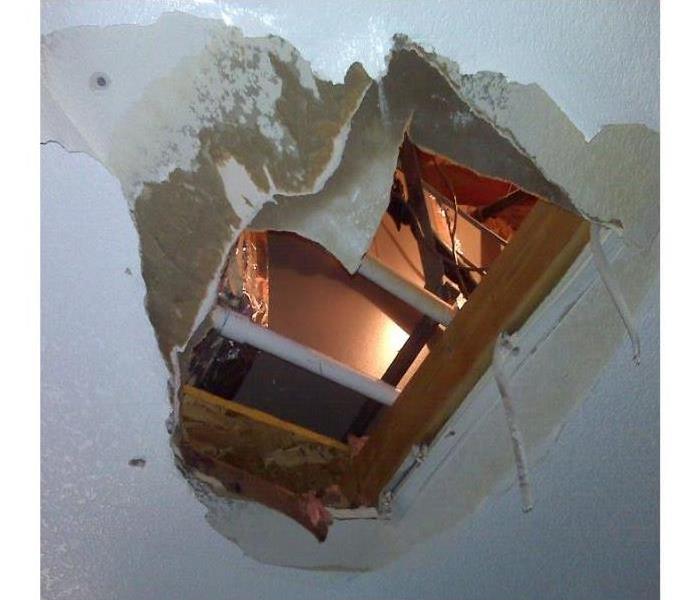Water Condensation Not Discovered Could Wreak Havoc!
5/18/2021 (Permalink)
Water- ekkk!
The discovery of wet feet while strolling through your home is always a unwelcomed shock. Typically the kitchen, bathroom or wash room is where you will find this.
As it starts to warm up, many are turning on their air conditioning units. They do not think that this could be a source of a water loss. However it is, the water condensation from these systems can wreak havoc and cause a major water loss. We here at SERVPRO see this annually.
Here are some tips to draining your air conditioner.
1. Turn off the power to your HVAC system at the thermostat and at the breaker.
2. If you have an indoor air handler in your attic or utility closet, you'll need to find the condensate pan. This is usually located directly under the unit. It may also be covered by a removable access panel.
3. If you see standing water in the drain pan, your drain line is probably clogged. Use a handheld or shop vacuum to remove the moisture. You can also use rags to soak up the water. At this point, you can clean the drain pan with soap.
4. Generally, clogged drains can be cleared with suction. If you have a shop vacuum, use it to pull the clog through the drain opening, which is located outside your house near the foundation. Place your hand around the pipe to improve suction and allow the vacuum to run for a minute. Then, check the vacuum canister to see if the clog was successfully removed.
5. Next, you'll need to identify the access point on the drain line. Usually, the drain will have a T-shaped vent with a PVC cover. Remove the cover and inspect the drain. Use this port to flush the drain with distilled vinegar. If you don't like the odor, you can use peroxide to gently bubble away the remaining debris. Alternately, you can use hot water and a drop of dish liquid.
6. Allow the solution to sit for 30 minutes. Complete the cleaning by flushing the pipe with water. Have a helper watch the pipe outside and tell you if the water is running freely.






 24/7 Emergency Service
24/7 Emergency Service
